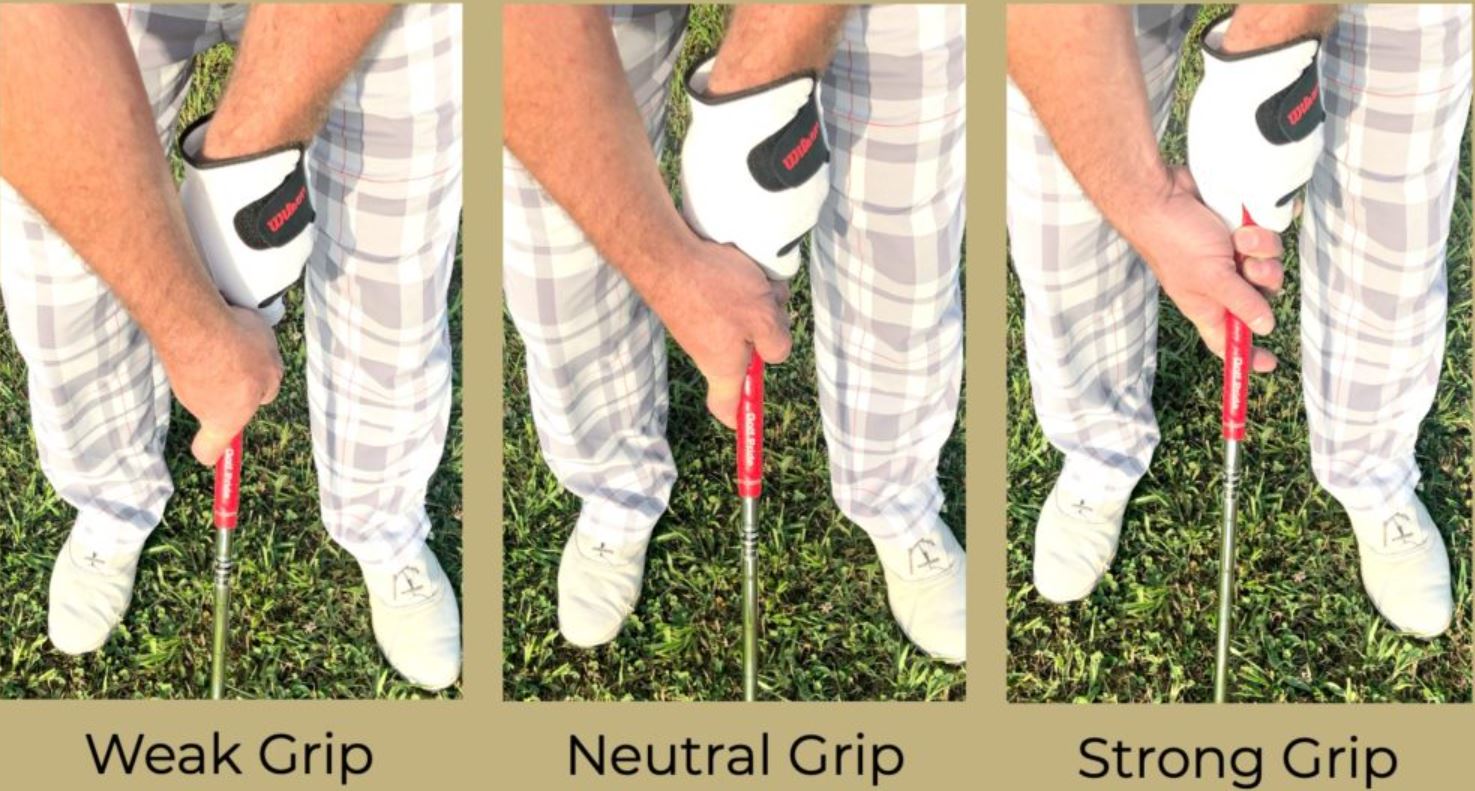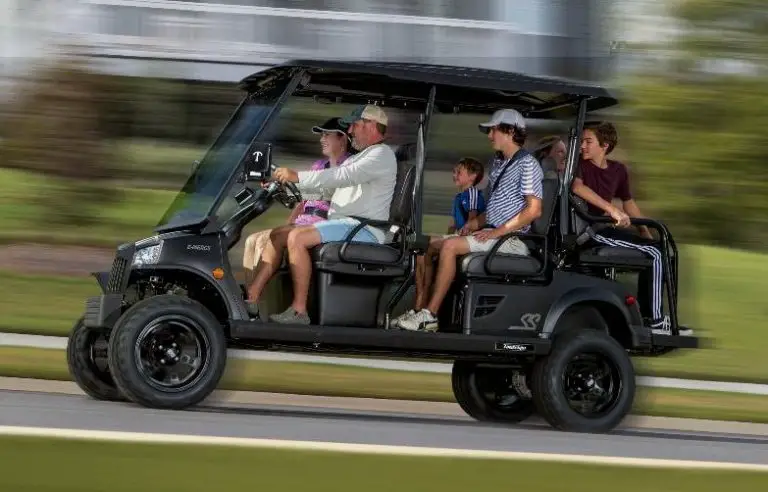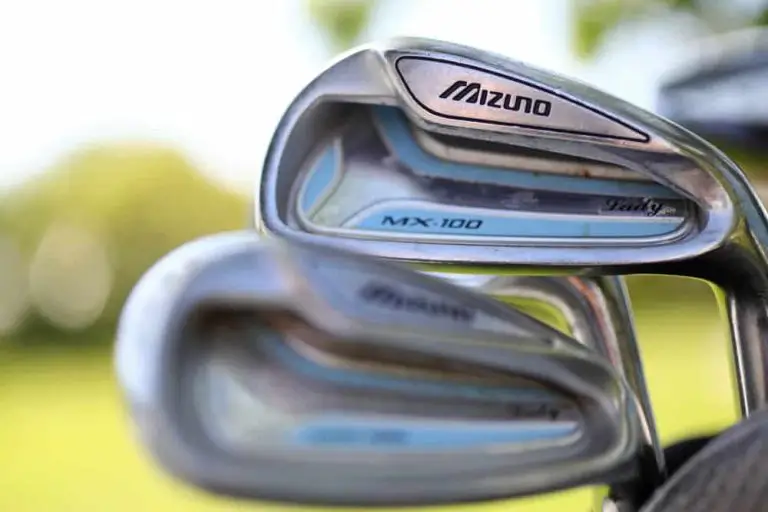Strong, Weak, Or Neutral Golf Grip

The grip is the foundation of every golfer’s swing, and mastering it can have a profound impact on your performance on the course. Understanding the differences between a strong, weak, and neutral golf grip is crucial for golfers of all levels, as it directly affects clubface control, shot direction, and overall swing consistency.
A strong golf grip, characterized by a rotation towards the dominant hand, can promote a draw or hook shot shape. On the other hand, a weak grip, with a rotation towards the trail hand, tends to result in a fade or slice. A neutral grip falls between the two extremes and aims to maintain a square clubface at impact.
Each grip style has its advantages and considerations. While a strong grip can provide power and control, it may require careful management to avoid excessive hooks. A weak grip can offer accuracy and the ability to work the ball, but it may sacrifice distance. The neutral grip, often favored by professional golfers, provides a balanced approach that promotes consistent ball striking and shot direction.
In this comprehensive guide, we will delve into the intricacies of the strong, weak, and neutral golf grips. We will explore their characteristics, effects on shot outcomes, proper hand placement, and adjustments for individual swing tendencies. By understanding and mastering the nuances of each grip style, you can optimize your swing and elevate your golf game to new heights.

What is the golf grip?
Before we explore the nuances of different grip styles, let’s establish a clear understanding of what the golf grip entails. The golf grip refers to the way a golfer holds the club, primarily using their hands. It is the connection between the golfer and the club, providing stability, control, and power throughout the swing.
The golf grip consists of two primary components: the lead hand (the left hand for right-handed golfers) and the trailing hand (the right hand for right-handed golfers). These hands work together to create a solid foundation for the swing and dictate how the clubface interacts with the ball at impact.
Why is the golf grip important?
A proper golf grip is crucial for several reasons. It directly affects clubface control, which determines the direction the ball will travel upon impact. Additionally, the grip influences clubhead speed, power generation, and overall swing consistency. Let’s delve deeper into the significance of a correct golf grip.
Impact on clubface control and shot direction
The grip has a profound impact on the clubface’s position and orientation at impact. Different grip styles can influence the clubface’s angle, which directly affects the initial direction the ball will take. A well-aligned clubface at impact leads to straighter shots, while a misaligned clubface can result in slices or hooks.
Influence on clubhead speed and power
The golf grip also plays a vital role in generating clubhead speed and power during the swing. A proper grip allows for efficient transfer of energy from the body to the clubhead, maximizing the golfer’s potential for distance and accuracy. Conversely, an improper grip can limit power generation and compromise swing efficiency.
What is a strong golf grip?
A strong golf grip refers to a grip where the hands are rotated more to the golfer’s dominant hand side (right for right-handed golfers, left for left-handed golfers). This grip style typically involves placing the “V” formed by the thumb and index finger of the lead hand (left hand for right-handed golfers) towards the trail shoulder.
Proper hand placement and positioning
To achieve a strong grip, the lead hand’s “V” should point towards the right shoulder (left shoulder for left-handed golfers). The trail hand should wrap around the grip, with the “V” pointing slightly to the right of the golfer’s chin (left of the chin for left-handed golfers).
Effects on shot shape and ball flight
A strong golf grip tends to promote a draw or hook shot shape. This is because the rotated position of the hands encourages a closed clubface at impact, resulting in a right-to-left ball flight for right-handed golfers (left-to-right for left-handed golfers). Golfers with a strong grip may find it easier to square the clubface consistently and generate a powerful release through impact.
Common misconceptions and concerns
Despite the advantages, a strong golf grip may raise concerns for some golfers. One common misconception is that a strong grip leads to uncontrollable hooks. While it is true that an excessively strong grip can exacerbate a hook, a properly executed strong grip, combined with proper swing mechanics, can produce controlled draws.
What is a weak golf grip?
In contrast to a strong grip, a weak golf grip involves rotating the hands more towards the trail hand side (left for right-handed golfers, right for left-handed golfers). In a weak grip, the “V” formed by the thumb and index finger of the lead hand points more towards the center or left of the golfer’s body.
Proper hand placement and positioning
To achieve a weak grip, the lead hand’s “V” should point more towards the center or left of the body (right for left-handed golfers). The trail hand should wrap around the grip, with the “V” pointing more towards the left shoulder (right shoulder for left-handed golfers).
Effects on shot shape and ball flight
A weak golf grip tends to promote a fade or slice shot shape. The more open clubface at impact, resulting from a weak grip, encourages a left-to-right ball flight for right-handed golfers (right-to-left for left-handed golfers). Golfers with a weak grip may find it easier to square the clubface consistently and minimize excessive hand action through impact.
Advantages and disadvantages of a weak grip
One advantage of a weak grip is the ability to control fades and keep the ball in play, particularly when there are hazards or tight fairways to navigate. However, a weak grip can limit the golfer’s ability to generate maximum power and distance. It requires compensatory measures to generate sufficient clubhead speed and maintain solid contact.
What is a neutral golf grip?
A neutral golf grip, as the name suggests, refers to a grip style that falls between a strong and weak grip. In a neutral grip, the hands are positioned in a way that promotes a neutral or square clubface at impact.
Proper hand placement and positioning
To achieve a neutral grip, the lead hand’s “V” should point towards the center of the body. The trail hand should wrap around the grip, with the “V” aligning with the lead hand’s “V” or pointing slightly to the right of the center for right-handed golfers (left of the center for left-handed golfers).
Effects on shot shape and ball flight
A neutral golf grip is designed to help golfers maintain a square clubface at impact, allowing for straighter shots. It provides a balanced platform for consistent ball striking and shot direction. Many professional golfers adopt a neutral grip to achieve maximum control and versatility in their shots.
Adjustments for individual swing characteristics
While a neutral grip serves as an excellent starting point for most golfers, individual swing characteristics may necessitate minor adjustments. Some golfers may benefit from slightly stronger or weaker grips to optimize their ball flight and shot shaping capabilities. Experimentation and professional guidance can help determine the ideal grip for each golfer.
How to determine the right grip for you?
Finding the optimal golf grip for your game requires careful assessment and experimentation. Consider the following factors when determining the right grip for you:
Assessing your swing tendencies and shot patterns
Observe your swing tendencies and shot patterns during practice sessions and on the course. Pay attention to the direction and shape of your shots. If you consistently struggle with slicing or hooking, it may be worth exploring grip adjustments to help correct those tendencies.
Seeking professional advice and guidance
Consulting with a golf instructor or club fitting expert can provide invaluable insights into your grip and swing mechanics. These professionals can analyze your swing, evaluate your grip, and offer tailored recommendations to enhance your performance. They can also provide drills and exercises to help you practice and refine your grip technique.
Experimenting and finding comfort and consistency
Ultimately, finding the right golf grip requires a degree of personal preference and comfort. Experiment with different grip styles, making gradual adjustments to determine their effects on your shot outcomes. Focus on achieving consistency and comfort with your chosen grip, as these are key factors in developing a repeatable swing.
Common grip-related mistakes to avoid
To ensure a solid and effective golf grip, it’s important to be aware of common mistakes that can hinder your performance. By avoiding these pitfalls, you can maintain a consistent and reliable grip throughout your swing.
Grip pressure and tension issues
One of the most common mistakes golfers make is gripping the club too tightly or with excessive tension. This can lead to restricted wrist and hand movement, inhibiting a smooth and fluid swing. Instead, strive for a relaxed grip that allows for proper wrist hinge and freedom of movement. Maintain a firm, yet comfortable, grip pressure throughout your swing.
Grip consistency throughout the swing
Another mistake is allowing your grip to change or shift during the swing. Inconsistencies in your grip can result in inconsistent ball striking and shot direction. Focus on maintaining a consistent grip pressure and hand positioning from address through impact. Regularly check and adjust your grip if needed during your practice sessions to develop muscle memory and reinforce a consistent grip.
Grip adjustments for different clubs and shots
Different shots and clubs may require slight grip adjustments to optimize performance. For example, when hitting a driver, some golfers prefer a slightly stronger grip to promote a draw and maximize distance. Conversely, when hitting delicate chip shots around the green, a lighter grip with a neutral or weak grip may provide better touch and control. Understand the nuances of grip adjustments for various shots and practice adapting your grip accordingly.
Grip training exercises and drills
Improving your grip strength, flexibility, and consistency can greatly enhance your overall golf game. Here are some training exercises and drills to incorporate into your practice routine:
Strengthening hand muscles and improving flexibility
- Squeeze a stress ball or grip trainer regularly to strengthen your hand muscles.
- Perform hand and wrist stretches to improve flexibility and range of motion.
- Utilize hand strengthening devices such as grip strengtheners or hand grip exercisers.
Developing a consistent and repeatable grip
- Practice gripping and regripping the club without looking at your hands to develop a sense of feel and muscle memory.
- Use alignment aids or training grips to ensure proper hand placement and positioning.
- Experiment with different grip styles and observe their effects on your shots during practice sessions.
Incorporating grip drills into your practice routine
- One-handed grip drill: Practice hitting shots with only your lead hand or trailing hand to improve grip stability and control.
- Thumb pressure drill: Focus on maintaining consistent pressure between your lead thumb and trail thumb throughout the swing.
- Clubface awareness drill: Grip the club with an exaggerated strong or weak grip and hit shots while focusing on clubface control and ball flight.
Regularly incorporating these exercises and drills into your practice sessions will help you develop a stronger, more consistent grip, leading to improved performance on the course.
The role of grip in different aspects of the game
While the grip is essential for the full swing, its influence extends to other areas of the game as well. Let’s explore how the grip affects different aspects of your golf game:
Putting grip variations and techniques
The grip can significantly impact your putting stroke. Experiment with different putting grips, such as the traditional overlap grip, the cross-handed grip, or the claw grip, to find a style that promotes a smooth and stable putting stroke. Pay attention to how the grip influences your feel for distance and control of the putter face.
Chipping and pitching grip considerations
A solid grip is crucial for short game shots around the green. Generally, a neutral or slightly weaker grip is preferred for chipping and pitching, as it helps promote a consistent strike and control of the clubface. Practice different grip pressures and hand placements to refine your touch and achieve better control over your short game shots.
Full swing grip adjustments for different shots
Depending on the desired shot shape and shot type, you may need to make grip adjustments for specific situations. For example, when hitting a fade or slice, adopting a slightly weaker grip can help promote the desired left-to-right ball flight. Conversely, a stronger grip may be advantageous when aiming for a draw or hook shot. Understand how grip adjustments can influence shot outcomes and adapt accordingly.
By recognizing the role of the grip in various aspects of the game, you can leverage it to improve your overall performance and versatility on the course.
How to maintain a proper grip over time?
Maintaining a proper grip is essential not only during a single round of golf but also over the long term. Here are some tips to help you sustain a consistent and effective grip throughout your golfing journey:
Regularly checking and monitoring your grip
Make it a habit to regularly assess your grip during practice sessions and rounds of golf. Take a moment before each shot to ensure your hands are properly positioned and the grip pressure is appropriate. Periodically check your grip during the round to catch any unintentional changes or slipping.
Addressing changes in grip due to fatigue or injury
As you play golf, you may experience fatigue or discomfort in your hands, which can affect your grip. Pay attention to any changes in your grip due to fatigue and take breaks if needed. Additionally, if you have a hand or wrist injury, consult with a medical professional for guidance on how to modify your grip or incorporate support devices to alleviate strain.
Using grip aids and accessories for support
Various grip aids and accessories are available to help golfers maintain a consistent grip. Examples include grip trainers, gloves, and grip-enhancing sprays or powders. Experiment with different options to find aids or accessories that provide the support and confidence you need to sustain a proper grip.
By being proactive and mindful of your grip, you can ensure its consistency and effectiveness over time, leading to improved performance and enjoyment of the game.
Conclusion
A strong, weak, or neutral golf grip can significantly impact your swing and shot outcomes. Understanding the characteristics, effects, and proper hand placement for each grip style is crucial for golfers seeking to improve their game. Remember to consider your swing tendencies, seek professional guidance, and experiment to find the grip that suits you best.
Maintaining a consistent and effective grip requires practice, awareness, and attention to detail. By regularly checking your grip, avoiding common mistakes, and incorporating grip training exercises, you can develop a solid foundation for your golf swing.
As you continue to refine your grip technique and adapt it to different shots and situations, you’ll experience enhanced clubface control, improved shot shaping capabilities, and increased confidence on the golf course. Embrace the importance of a strong, weak, or neutral golf grip, and let it become a key factor in unlocking your full golfing potential.




